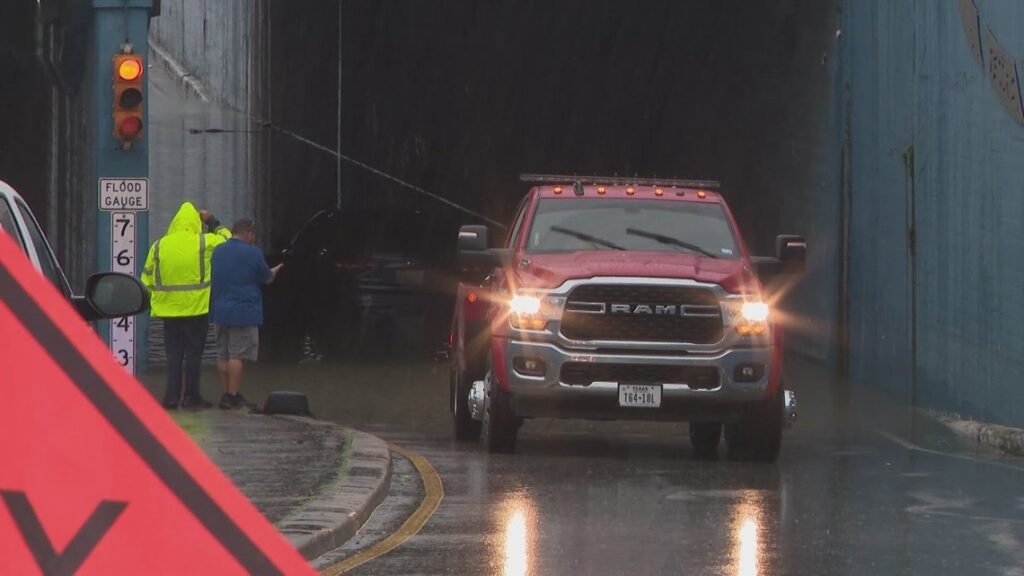The underpass near Navigation Boulevard and Franklin Street in east Downtown is known to be flood-prone, and there was around 2.5 feet of water in it on Thursday.
HOUSTON — A man had to be rescued Thursday morning after his car got stuck in floodwaters at a well-known Houston trouble spot near Navigation Boulevard and Franklin Street in east Downtown.
Houston police and a tow truck crew pulled the driver and his blue sedan out of roughly 2.5 feet of water that accumulated in the underpass due to the storms. Fortunately, he was not injured.
But the incident has raised fresh concerns over the city’s flood preparedness – and why barriers were not placed at the underpass before the storm, despite its history of flooding. A similar situation happened at the same underpass just weeks ago.
Underpasses, such as the one near Navigation and Franklin, are known to flood during heavy rain, and the city said it has protocols in place to address those conditions.
Brian Mason, director of Houston’s Office of Emergency Management, said Houston Public Works monitors certain locations and will have barricades ready if certain conditions are expected.
“When we have 4 inches or greater in the forecast, that is when they pre-stage or deploy barricades at what they call their 49 kind of life safety, flood-prone locations,” Mason said.
Mason confirmed with KHOU 11 that the underpass near Navigation and Franklin is on that list. However, on Thursday, only police cones were put up – and only after the driver had already made it through and gotten stuck.
KHOU 11 asked Mason directly why no barricades were in place ahead of time.
“If they do pre-stage in that area, why was there no barricade in front of that underpass?” reporter Orko Manna asked.
“Forecasts have limitations, but based on the information provided to us by the National Weather Service, today’s rain event did not exceed the normal threshold or trigger where Public Works would have gone and pre-deployed barricades,” Mason responded.
Mason added that longer-term fixes are under review.
“I know Public Works has been evaluating, installing a more permanent, manual gate to where it can easily be swung into place and locked,” Mason said. “Public Works has determined that the manual barricade dropping is the most efficient, as we’re evaluating other technologies.”
Elsewhere in Houston Thursday, high water impacted Uvalde Road near I-10, and a vehicle stalled on a frontage road off the North Freeway.
Officials continued to stress a simple but urgent message: “Turn Around, Don’t Drown.”
“There’s really no way to tell just how deep that standing water is on a flooded road. Driving through it can cause your vehicle to stall and can result in severe damage, and it can also result in injury or even possibly death,” AAA Texas spokesperson Daniel Armbruster said. “The water doesn’t even have to be that deep, and most of the time, you really can’t tell how deep the water is anyway.”
Even in the absence of barriers, Houston OEM officials are reminding drivers to watch for flood gauges at known problem spots. The gauges show how deep the water is, and many have flashing lights to help warn drivers.
The bottom line, according to officials: Even if the water doesn’t look deep, do not drive through it.
